Satellite People - [3]
There were eight cars parked in the space outside the gate, in addition to a police car. One of them was Magdalon Schelderup’s own big, black, shiny BMW. I was quickly able to confirm that he had told the truth: three of the tyres had been slashed with either a knife or some other sharp instrument.
The other cars were all smaller, but still new and of good quality. The only exception was a small, well-used blue Peugeot that looked as if it had been on the road since the early 1950s. I jotted down a working theory that all of the deceased’s guests were overwhelmingly upper-class, albeit with some obvious variations in their financial situations.
It was not a warm welcome. As I made my way to the front door, a cacophony of wild and vicious barking suddenly erupted behind me, and I spun round instinctively to protect myself against the attacking dogs. But fortunately that was not necessary: the three great Alsatians that were straining towards me were clearly securely chained. Nevertheless, the sight of the dogs only served to strengthen my feeling of unease and my conviction that Magdalon Schelderup must have felt safe in his own home. The threat had been in his innermost circle – as he had expected, but it had come two days earlier than anticipated.
At the front door, I greeted the two constables who had been first at the scene and were now standing guard. They were both apparently relieved to see me, and confirmed that despite the death, the mood in the house was surprisingly calm.
I soon understood what they meant when, one corridor and two flights of stairs later, I stepped onto the red carpet in Magdalon Schelderup’s vast dining room. At first it felt as though I had walked into a waxworks. The furniture and interior was in the style of the early 1900s. The fact that there were no pictures or decoration of any type on the walls only added to the cold, unreal feeling. There was a single exception, which was therefore all the more striking. A well-executed full-length portrait of Magdalon Schelderup filled one of the short walls.
The host himself was now laid out on a sofa by the wall, just inside the door. He was dressed in a simple black suit, and as far as I could see had no obvious injuries of any kind. His eyes were closed and his lips had a bluish tinge. I could quickly confirm that there was no sign of life when I felt for a pulse in his neck and inner wrist.
A large dark mahogany table set for eleven dominated the centre of the room. The roast lamb and vegetables had been served on porcelain plates and the undoubtedly excellent wine had been poured into the wine glasses. But none of the guests had shown any inclination to eat or drink. They also had champagne, which no one had touched.
What had obviously been Magdalon Schelderup’s throne at the head of the table was now empty. The ten guests, silent in their Sunday best, had taken their seats around the table again. They were all looking at me, but no one said a word. A swift headcount informed me that there were six women and four men. I noted a degree of uncertainty and surprise in some of the faces, but saw no evidence of grief in any. Not a single tear on any of the twelve ladies’ cheeks around the table.
Eight of the guests I reckoned to be fairly evenly distributed across the age group thirty to seventy. They all looked very serious and impressively controlled. There were two who stood out, each in their own way, and therefore immediately grabbed my attention, and they were the youngest in the party.
In the middle of the right-hand side of the table sat a slim, fair-haired young man in his late twenties, who was by far the most nervous person in the room. An hour had passed since the death, and yet he was still squirming on his chair, his face hidden in his shaking hands. There were no tears here either, only beads of sweat on his temples and brow. It struck me that there was something familiar about the young man. But it was only when he realized that I was looking at him and he took his hands from his face that I suddenly recognized him as the famous athlete, Leonard Schelderup.
I had no doubt read somewhere on the sports pages at some point that Leonard Schelderup was Magdalon Schelderup’s son, then promptly forgotten. A year ago, I had myself stood on the stands at Bislett Stadium to watch the Norwegian Championships and seen Leonard Schelderup fly past on his way to winning gold in the middle-distance race, his shoulder-length hair fluttering in the wind. And I had been very impressed. Partly by the manner in which he allowed his competitors to pass, only then to speed up dramatically when the bell rang to mark the final lap. And partly by the almost stoic calm he displayed during the thunderous applause when he passed the finishing line. I commented to the person standing next to me at the time that it seemed that nothing, but nothing, could make Leonard Schelderup lose his composure – which was why it now made such an impression on me to see the same man sitting there, looking up at me with pleading eyes. He was only a matter of feet away and apparently on the verge of a nervous breakdown.
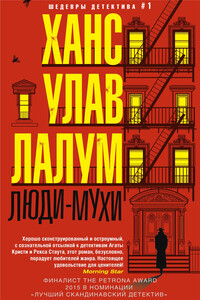
Убит бывший лидер норвежского Сопротивления и бывший член кабинета министров Харальд Олесен. Его тело обнаружено в запертой квартире, следов взлома нет, орудие убийства отсутствует. На звук выстрела к двери Олесена сбежались все соседи, но никого не увидели. Инспектор уголовного розыска Колбьёрн Кристиансен считает, что убийство, скорее всего, совершил кто-то из них. Более того, он полагает, что их показания лживы.
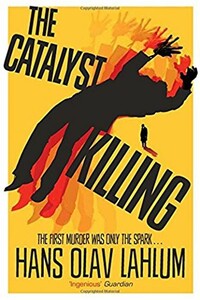
The third mystery in the hugely compelling, bestselling international crime series from Norway's answer to Agatha Christie, Hans Olav Lahlum, The Catalyst Killing will have you guessing to the final clue. The first murder was only the spark… 1970: Inspector Kolbjorn Kristiansen, known as K2, witnesses a young woman desperately trying to board a train only to have the doors close before her face. The next time he sees her, she is dead… As K2 investigates, with the help of his precocious young assistant Patricia, he discovers that the story behind Marie Morgenstierne's murder really began two years ago, when a group of politically active young people set out on a walking tour in the mountains.
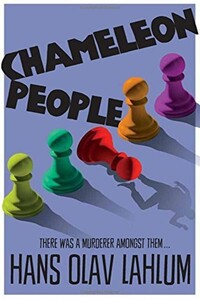
From the international bestselling author, Hans Olav Lahlum, comes Chameleon People, the fourth murder mystery in the K2 and Patricia series.1972. On a cold March morning the weekend peace is broken when a frantic young cyclist rings on Inspector Kolbjorn 'K2' Kristiansen's doorbell, desperate to speak to the detective.Compelled to help, K2 lets the boy inside, only to discover that he is being pursued by K2's colleagues in the Oslo police. A bloody knife is quickly found in the young man's pocket: a knife that matches the stab wounds of a politician murdered just a few streets away.The evidence seems clear-cut, and the arrest couldn't be easier.
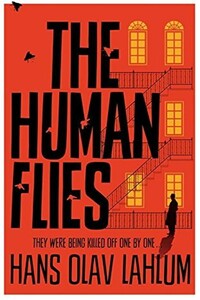
Oslo, 1968: ambitious young detective Inspector Kolbjorn Kristiansen is called to an apartment block, where a man has been found murdered. The victim, Harald Olesen, was a legendary hero of the Resistance during the Nazi occupation, and at first it is difficult to imagine who could have wanted him dead. But as Detective Inspector Kolbjorn Kristiansen (known as K2) begins to investigate, it seems clear that the murderer could only be one of Olesen's fellow tenants in the building. Soon, with the help of Patricia – a brilliant young woman confined to a wheelchair following a terrible accident – K2 will begin to untangle the web of lies surrounding Olesen's neighbors; each of whom, it seems, had their own reasons for wanting Olesen dead.

Содержание: 1. Блаженный грешник 2. Одинокий островитянин 3. Анатомия анатомии 4. Спокойной ночи 5. Исповедь на электрическом стуле 6. Прибавка в весе 7. Пустая угроза 8. Лазутчик в лифте 9. Не трясите фамильное древо 10. Смерть на астероиде 11. До седьмого пота 12. Такой вот день… 13. Дьявольщина 14. Аллергия 15. Милейший в мире человек 16. Победитель 17. Девушка из моих грез 18. Да исторгнется сердце неверное! 19. Как аукнется… 20. Человек, приносящий несчастье 21. Рождественский подарок 22. Изобретение.

Оба романа, помещенные в книге, — об убийцах. Однако психологические портреты этих убийц так различны, как разнообразны и непохожи человеческие судьбы. Что приводит человека к преступлению? И вообще, преступник — это человек или чудовище? Весь ход повествования заставляет читателя не раз задавать себе эти вопросы и пытаться ответить на них.
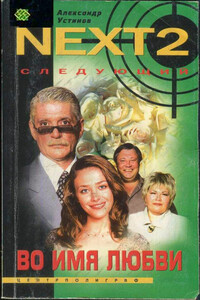
Книга написана по сценарию известного российского драматурга А.В. Тимма.Шайка Ангелины Виннер продолжает борьбу. Им удается похитить Ольгу Кирсанову, жену убитого хозяина «Империи». Сын Ольги Ваня ради спасения матери отказывается от своих прав на фирму. Враждебный лагерь празднует победу, но… преждевременно! В руках у Лавра козырная карта — завещание, и, обнародовав его, он ломает планы своих врагов. Остановятся ли бандиты, или кто-то снова окажется их следующей жертвой?
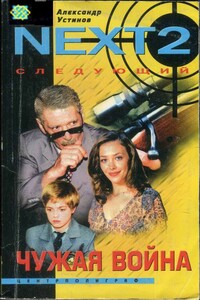
Книга написана по сценарию известного российского драматурга А.В. Тимма.Франц Хартман и Ангелина Виннер, подстроившие автокатастрофу, в которой погиб хозяин «Империи» Владимир Кирсанов, намерены идти до конца. Теперь они замышляют убийство его жены Ольги и несовершеннолетнего сына Вани, наследника «трона». Волею случая Лавру суждено сыграть роль доброго ангела в судьбе женщины и ребенка.

Обстоятельный и дотошный инспектор амстердамской полиции Ван дер Вальк расследует странное убийство домохозяйки («Ать-два!»). Героям известного автора детективов предстоят жестокие испытания, прежде чем справедливость восторжествует.
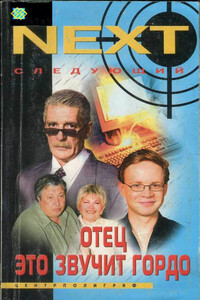
Книга написана по сценарию известного российского драматурга А.В. Тимма. На страницах романа вы встретитесь со старыми знакомыми, полюбившимися вам по сериалу «NEXT», — благородным и великодушным Лавром, его сыном Федором, добродушным весельчаком Санчо и решительной Клавдией. Увлекательное повествование вводит в мир героев, полный настоящих рыцарских подвигов и романтических приключений.